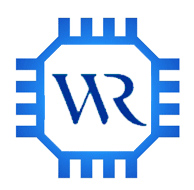2002年三星电子半导体总部取得了飞速发展,在世界半导体企业中高居第二位。目前三星半导体总部已经在中国成立了两个生产型公司:三星电子(苏州)半导体有限公司和苏州三星电子液晶显示器有限公司。两个销售型公司,分别为:三星 代理商有限公司和三星半导体(香港)有限公司。总投资达4.75亿美元。
为积极探索以产品的高级化、个性化、国产化为基础的品牌中心战略,三星半导体总部在苏州、杭州成立研究所——三星半导体代理商,对电子零部件(Device)和集成电路(IC)的软件及硬件设计,电子产品解决方案Device solution)的研发,半导体封装技术进行研发。
Samsung's Semiconductor Business was founded in Korea with the acquisition of Hankook Semiconductor in 1974. Early operations consisted mostly of developing and mass producing ICs and peripherals for such consumer electronics. The pivotal turning point in Samsung's evolution into a leading semiconductor manufacturer was the successful development of the 64Kb DRAM in 1983.
Fusion Technology
The advent of a new "Fusion Era" of
multi-functional, hybrid components is
expected to profoundly affect the
semiconductor industry and its numerous
areas of application. Fusion technology
for the semiconductor industry signifies
the continual development of smaller and
higher-density components with multiple
functions on one chip, offering
multi-faceted solutions that stretch
across many industry segments. Samsung
has been leading the industry in fusion
technology with the development its
OneNAND™, Flex-OneNAND™ and OneDRAM™
fusion memory solutions. Samsung
predicts that semiconductor technology
will spread to a significantly greater
degree than previously thought possible:
in biotechnology, healthcare, robotics,
aviation, solar energy and in many more
areas related to research and
development of eco-friendly
technologies.
Leading Products and Technology
DRAM with 40nm Process Technology:
Samsung Electronics will begin migrating
to 40nm class technology in the third
quarter of 2009. Use of the 40nm design
rule results in 60% higher productivity
over 50nm processing. As a pioneer of
advanced process technology, Samsung
continues it lead in the timely
introduction of technology advancements
which serves as an important means in
achieving cost efficiencies. Samsung’s
40nm class technology will also enable
the company to move more efficiently to
the next generation of high density, 2Gb
DDR3 memory. Samsung plans to continue
providing the industry with
cost-efficient leading-edge memory
technologies ahead of the competition.
OneDRAM™, a Fusion Memory Solution: In
2004, Samsung first introduced its
widely popular OneNAND™, a unique fusion
of NOR and NAND flash memory. Now, the
company is offering OneDRAM™, a new
concept in mobile DRAM/SRAM that
increases the data transmission speed
between processors and reduces power
consumption. In September of 2008,
Samsung launched the 512Mb OneDRAM for
multimedia phones and also begun
sampling its 1Gb OneDRAM to major
handset manufacturers.
NAND Flash: Samsung has been the leading
global producer of NAND flash since
2002. Samsung's NAND Flash has firmly
established itself as the key component
in many popular yet relatively new
products such as digital still cameras,
handsets, MP3 players and USB Flash
drives. Earlier this year, Samsung began
shipping 32Gb NAND chips (moviNAND) in
modules with densities up to 32GBs,
produced using 30nm-class process
technology. Samsung’s NAND Flash
development is expected to eventually
lead to 20nm design rules, and even
smaller geometries.
"Intelligent" DDI (Display Driver IC):
Samsung's first-ever "intelligent" DDI
can monitor ambient light intensity and
automatically adjust the on-screen
brightness of mobile displays for
optimal legibility. Power consumption is
reduced by at least 30% when the display
is used indoors.
1GB S-SIM Card: This next-generation
card solution incorporates NAND flash
memory in a smart card chip package. The
SIM card function has been upgraded and
the ability to store multimedia data has
been added.
Solid State Drive: This new-concept data
storage device uses flash memory in
place of the conventional hard disk,
expanding the application of NAND flash
memory far beyond small-size mobile and
digital consumer applications, to the
server marketplace. The drive improves
the stability and performance of any
system in which it is used. In May 2008,
Samsung announced its most recent SSD
technology development – a multi-level
cell (MLC) flash-based SATA II 256
Gigabyte (GB) solid state drive (SSD) in
2.5-inch and 1.8-inch versions for
desktop and notebook PCs, as well as
other applications. Mass production of
the 256GB SSD began in November of 2008.
External Hard Drive: Samsung's S Series
external hard drives come in 1.8-inch
and 2.5-inch form factors. By
incorporating a USB controller within a
conventional hard drive, Samsung's S
Series has a smaller footprint compared
to. competing external hard drives. Its
USB on-board technology also reduces the
weight and the power consumption of the
drives. In addition, a power savings
"intelligence" program monitors each
drive's use and places the drive into a
low-power "sleep mode" whenever it drive
has not been used for 10 minutes. S
Series drives are available in six
sleek, glossy colors.



